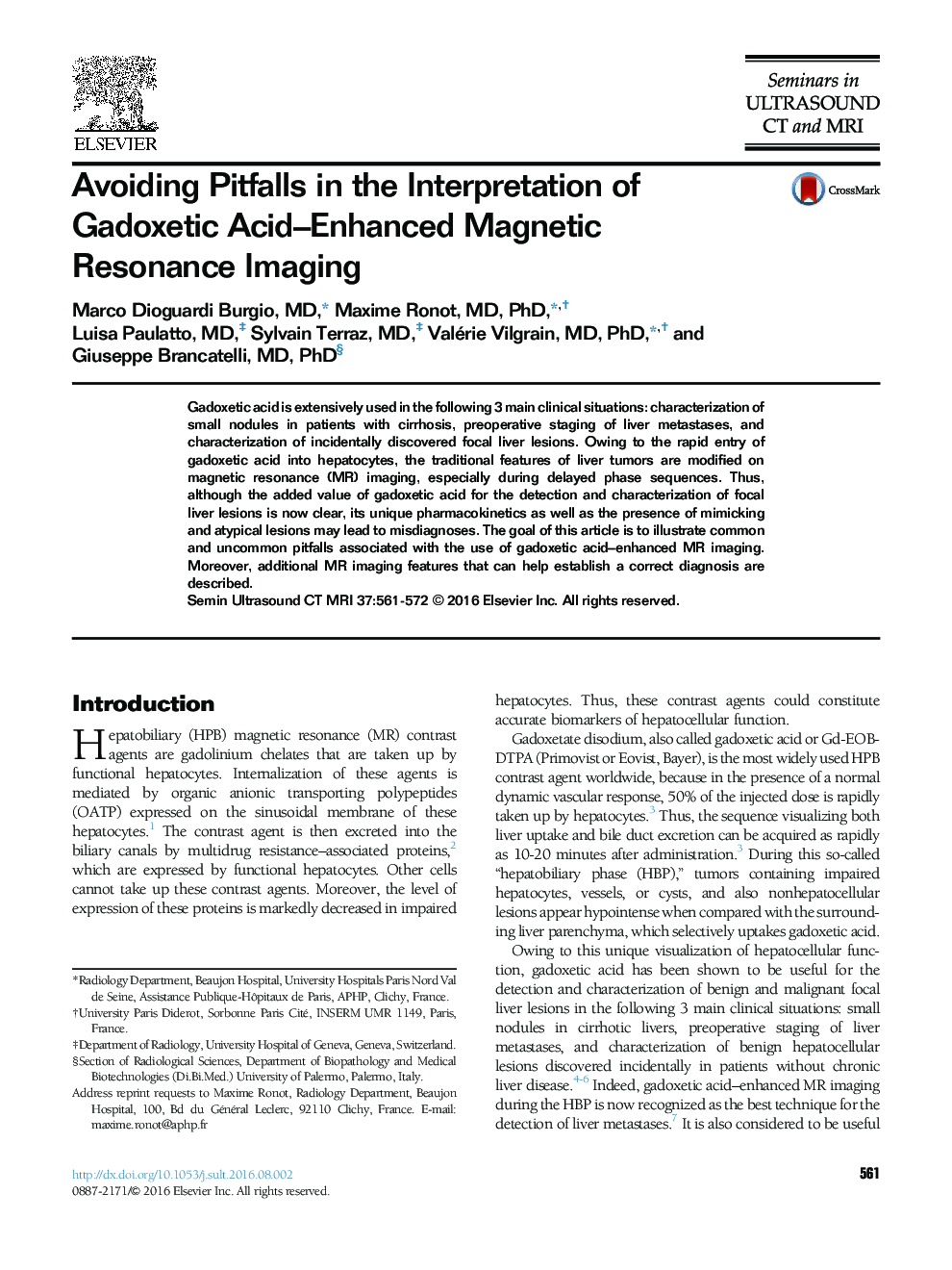| Article ID | Journal | Published Year | Pages | File Type |
|---|---|---|---|---|
| 5579603 | Seminars in Ultrasound, CT and MRI | 2016 | 12 Pages |
Abstract
Gadoxetic acid is extensively used in the following 3 main clinical situations: characterization of small nodules in patients with cirrhosis, preoperative staging of liver metastases, and characterization of incidentally discovered focal liver lesions. Owing to the rapid entry of gadoxetic acid into hepatocytes, the traditional features of liver tumors are modified on magnetic resonance (MR) imaging, especially during delayed phase sequences. Thus, although the added value of gadoxetic acid for the detection and characterization of focal liver lesions is now clear, its unique pharmacokinetics as well as the presence of mimicking and atypical lesions may lead to misdiagnoses. The goal of this article is to illustrate common and uncommon pitfalls associated with the use of gadoxetic acid-enhanced MR imaging. Moreover, additional MR imaging features that can help establish a correct diagnosis are described.
Related Topics
Health Sciences
Medicine and Dentistry
Radiology and Imaging
Authors
Marco MD, Maxime MD, PhD, Luisa MD, Sylvain MD, Valérie MD, PhD, Giuseppe MD, PhD,
